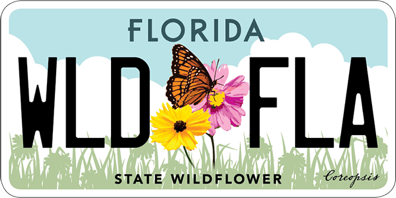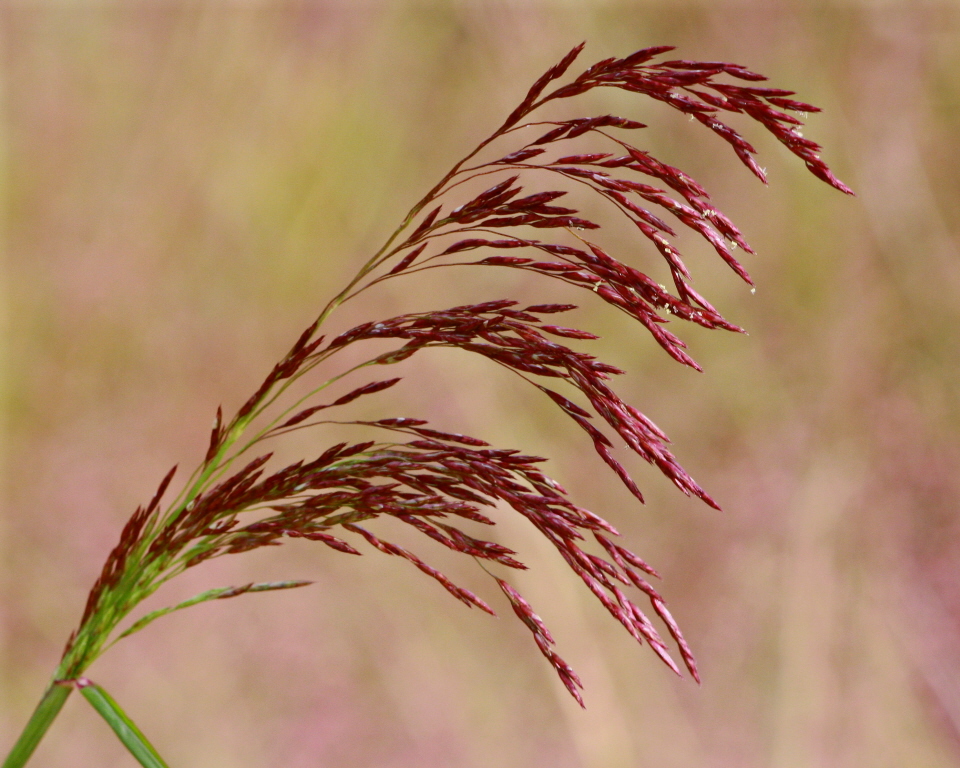Purpletop
Pictured above: Brilliant purple inflorescence of Purpletop (Tridens flavus) by Mary Keim. Click on terms for botanical definitions. View post as a PDF.
Purpletop (Tridens flavus) is an attractive bunchgrass that occurs in open woodlands and disturbed sites such as fields and roadsides. Its late summer to early fall blooms create a striking magenta to burgundy display. Purpletop also offers significant wildlife value – providing cover and food for small mammals and birds, and serving as a host plant for various skipper butterfly species as well as the Common wood nymph (Cercyonis pegala).
Purpletop’s green linear leaves are shallowly grooved to flat and range from 10 to 28 inches long. A key identifying feature is a ligule, composed of stiff hairs on both sides of the leaf sheath at the collar. The flowering panicles consist of purple spikelets, each with four to eight florets. This plant is also commonly referred to as Grease grass due to the oily coating on its seeds.
The genus name Tridens is Latin for “three-toothed,” likely referring to a characteristic three-veined lemma tip found in the type species. The species epithet flavus is Latin for “yellow,” and refers to Purpletop’s whitish-yellow seeds.
Family: Poaceae (Grass family)
Native range: Throughout, but more common in North Florida and becoming rare into South Florida
To see where natural populations of Purpletop have been vouchered, visit florida.plantatlas.usf.edu.
Lifespan: Perennial
Soil: Moist to dry well-drained sandy or calcareous soils
Exposure: Full sun to part shade
Growth habit: 3-5’ tall
Propagation: Seed, division
Florida regions of landscape suitability: North, Central, South
Garden tips: Purpletop is great for native meadows and naturalistic settings. It can also be planted en masse for a beautiful late summer to fall display.
Purpletop is occasionally available from nurseries that specialize in Florida native plants. Visit www.PlantRealFlorida.org to find a nursery in your area. Seeds may be available from the Florida Wildflower Growers Cooperative at www.FloridaWildflowers.com.
Learn more about Purpletop from the Florida Native Plant Society and the Institute for Regional Conservation.

